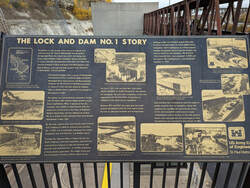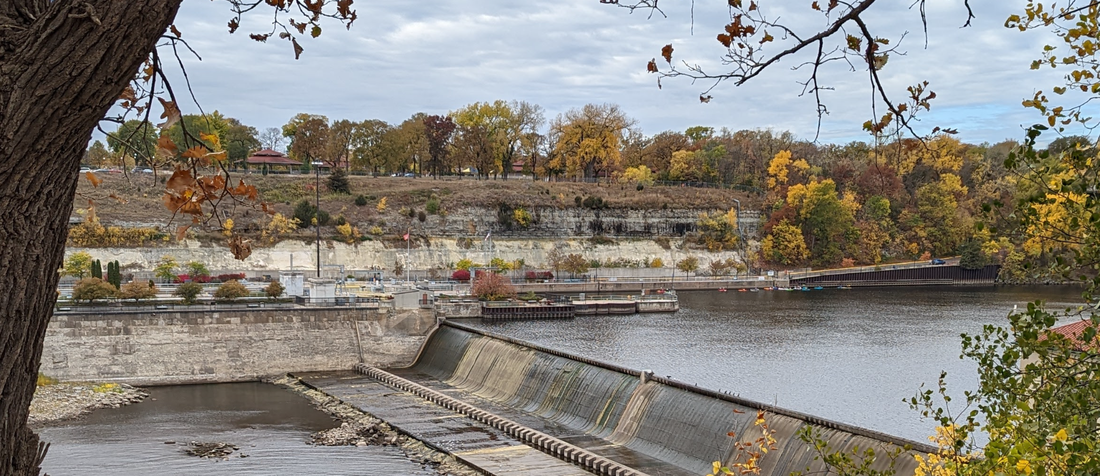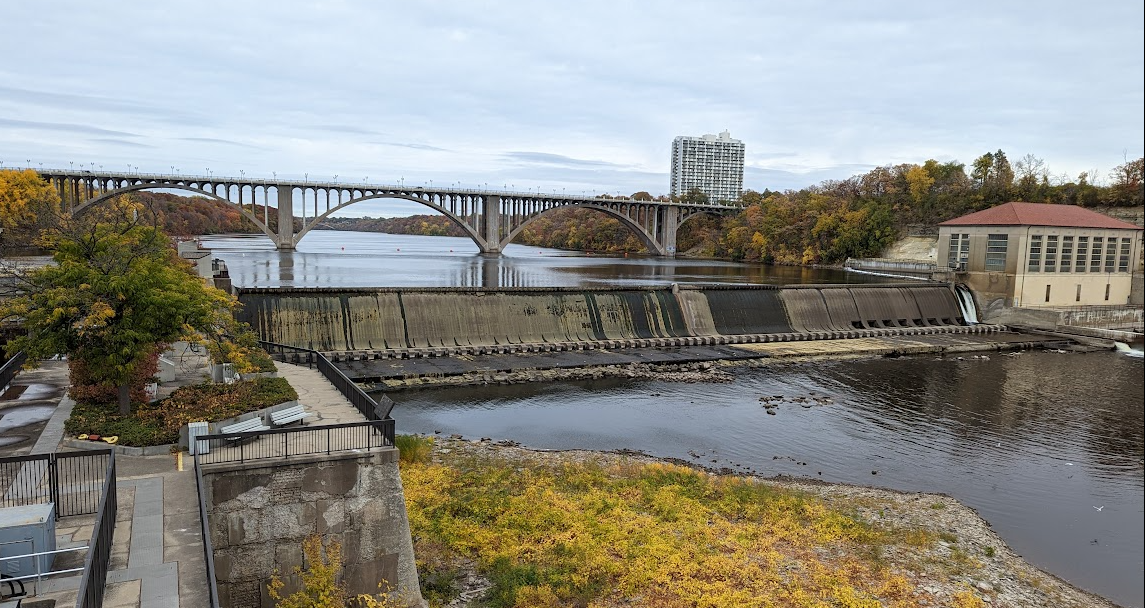 There are three locks and dams on the Mississippi in Minneapolis. The responsibility for operation of the Locks is currently with the US Army Corps of Engineers, but that could change. Studies are now in the works to determine if changes are needed, or indeed, if the dams are even needed. What is decided here has potential to change the face of the Mississippi forever. Background: To facilitate water-borne commercial navigation (barges and tow boats). Congress directed the construction of Lock and Dam 1 (also known as the Ford Dam) in 1917. Lower St. Anthony Falls Lock and Dam in 1956 and Upper St. Anthony Falls in 1963. The US Army Corps of Engineers built these three locks projects and continues to operate and maintain them today. In 2014, Congress directed that Upper St. Anthony Falls be closed within one year In June 2015, the Corps of Engineers halted lock operations at Upper St. Anthony Falls Local and Dam, eliminated navigation above St. Anthony Falls.
Upper St. Anthony Falls: In January 2021, a draft disposition study for Upper St. Anthony Falls was published. Under the direction of Congress, lands surrounding the lock and dam will be conveyed to the city of Minneapolis. The draft disposition study report proposed disposal of the remainder of Upper St. Anthony Falls Lock and Dam. A final disposition study report and recommendations will be prepared following verification of lands to be conveyed to the city of Minneapolis. The report will be publicly available and published on the St. Paul District website. Lower St. Anthony Falls and Dam 1: A joint disposition study for Lower St. Anthony Falls Lock and Dam and Lock and Dam 1 started Fall 2022. Public open houses are planned for October 2022. Details of those and future events and up-to-date information about the disposition study and the locks and dams can be found at https://www.mvp.usace.army.mil/MplsLocksDisp osition/. Early and continuing participation by a diversity of interests provides essential information and insights on alternatives. Alternatives to be Studied: The Corps will study combinations of the following alternatives: • Full or partial disposal • Modification of the locks and dams • Removal of the locks and dams • Potential opportunities for the locks and dams to serve a new purpose such as ecosystem restoration A recommendation to Congress, the outcome of this disposition study, is not expected until 2024, at the earliest. A recommendation will be selected after all alternatives are fully evaluated.
 Source material for this post taken from USACE fact sheet for the project and USACE website.
0 Comments
Your comment will be posted after it is approved.
Leave a Reply. |
| LWV Upper Mississippi River Region | UMRR blog |


 RSS Feed
RSS Feed